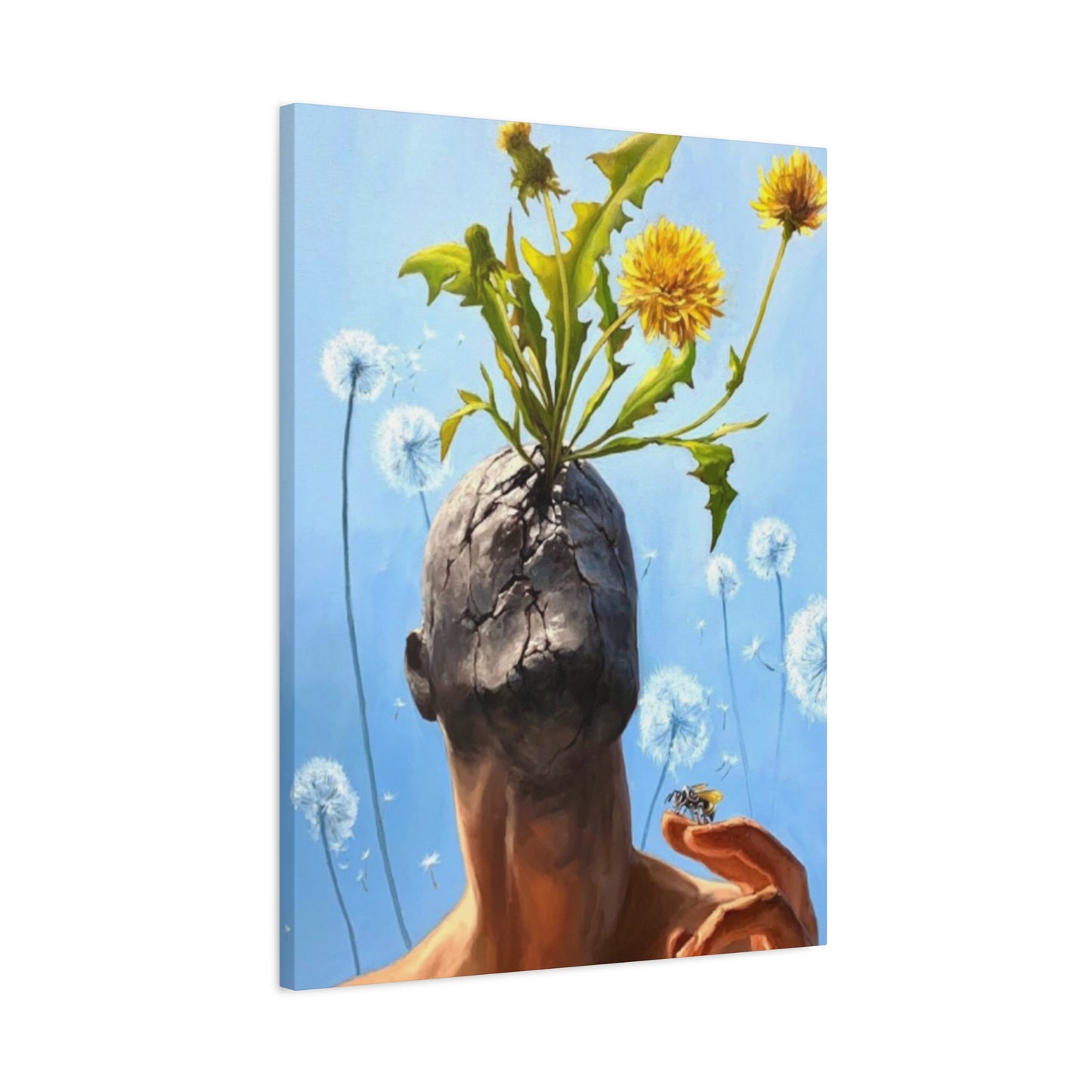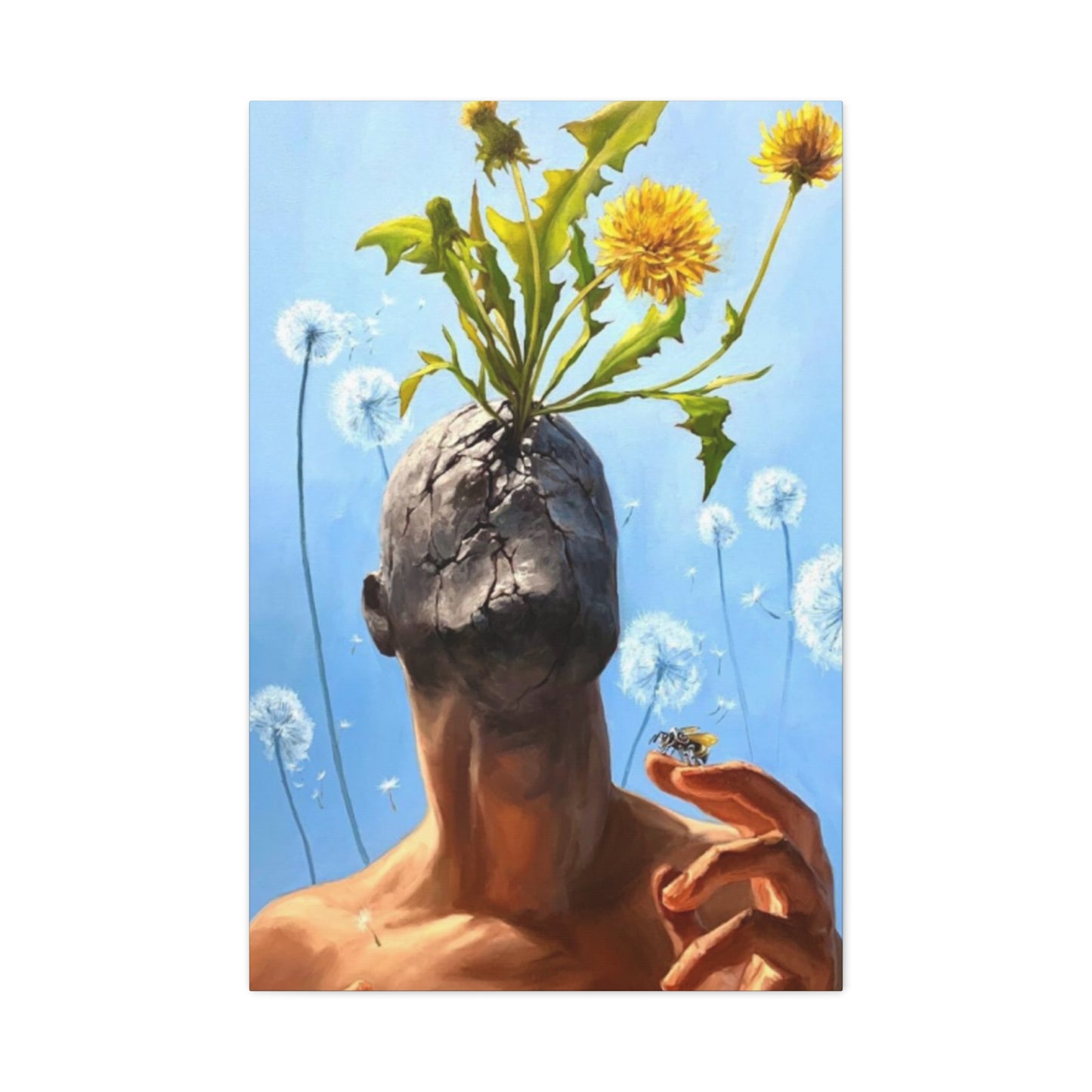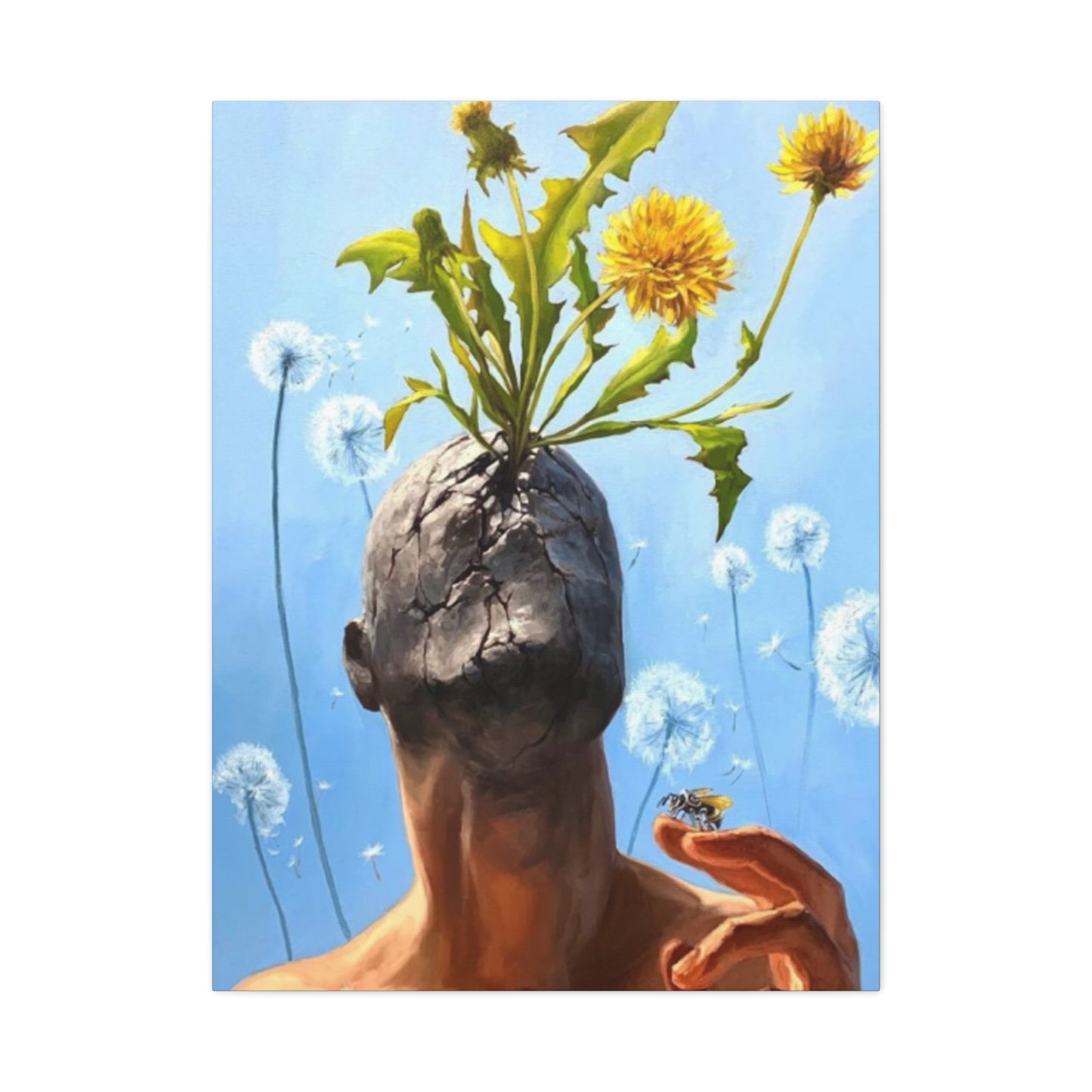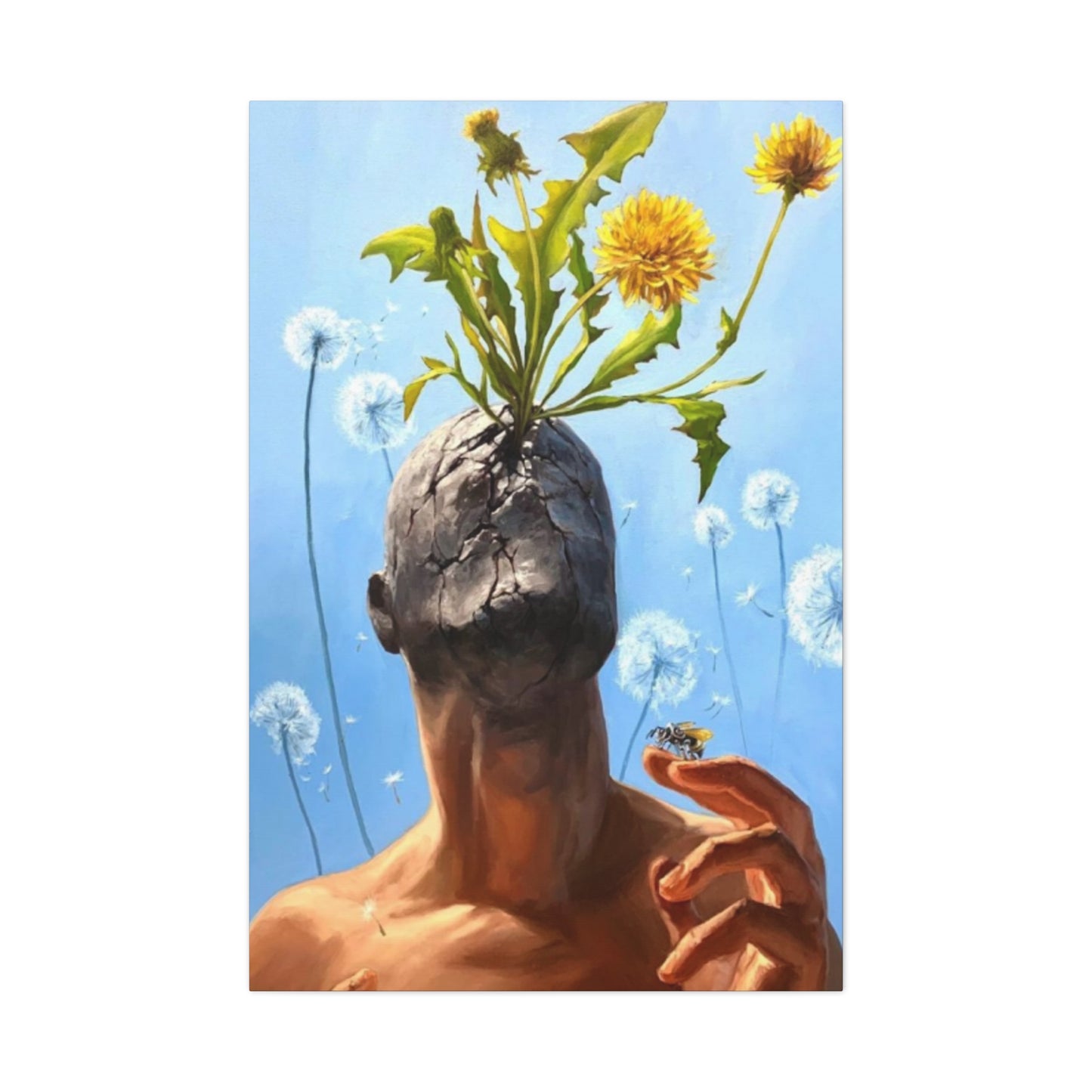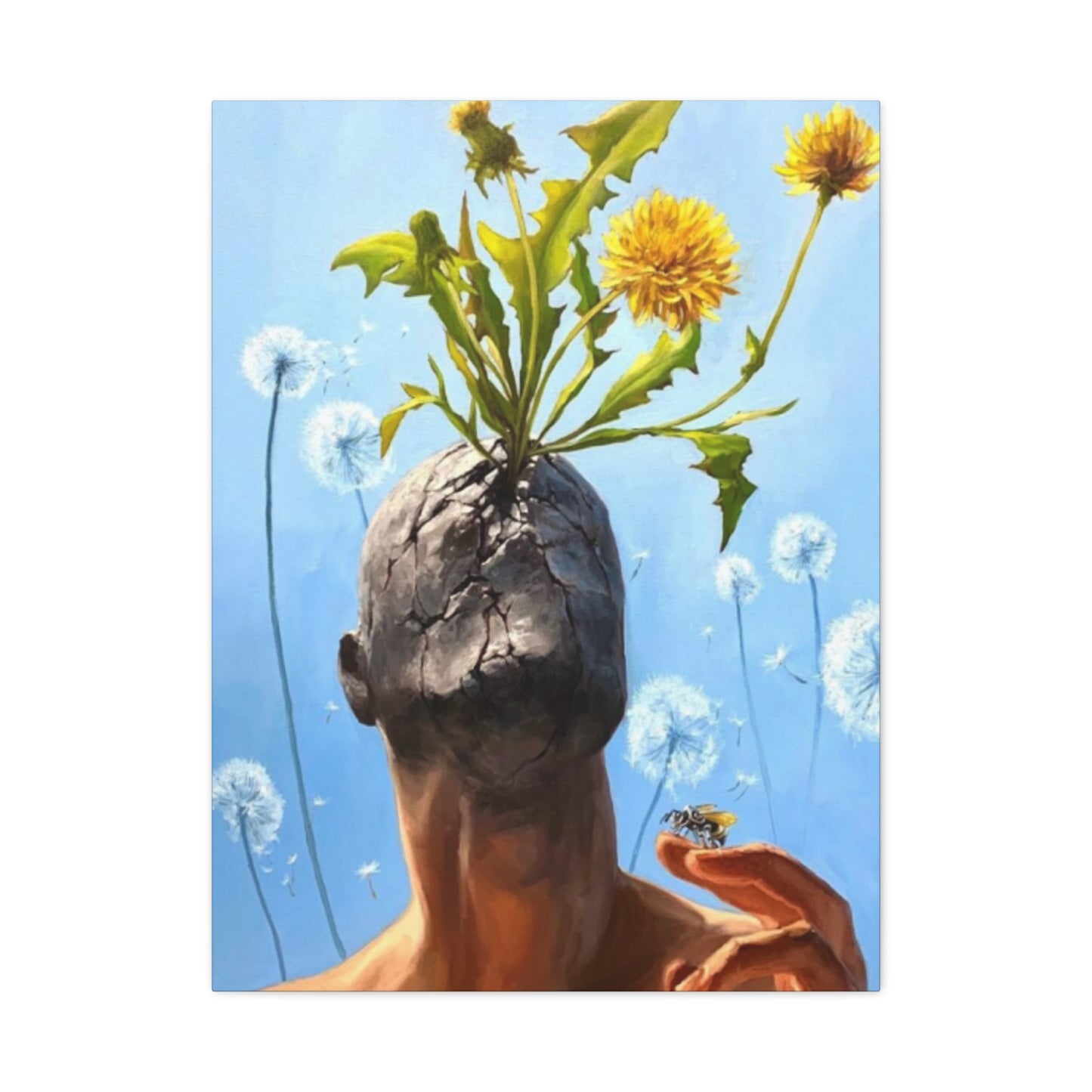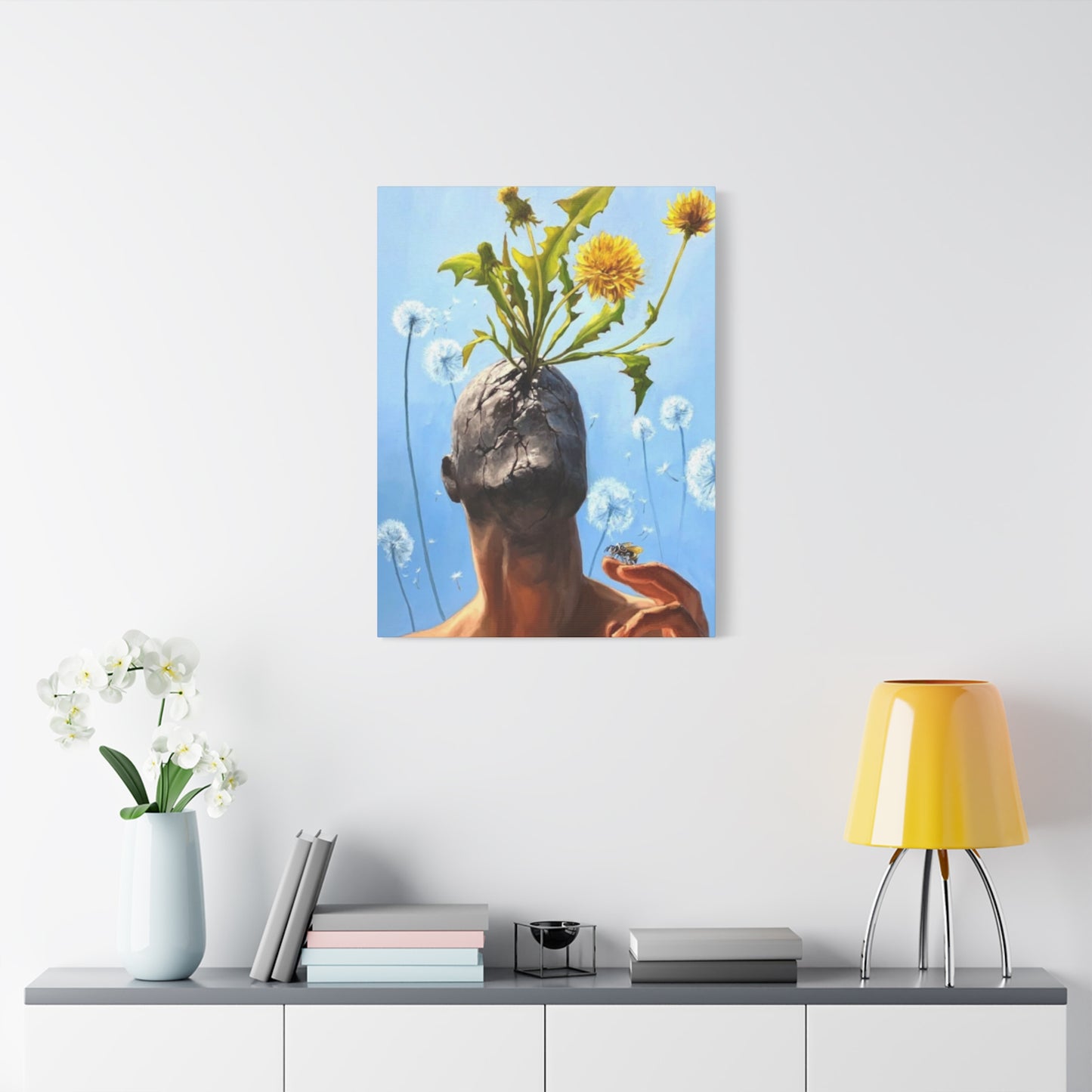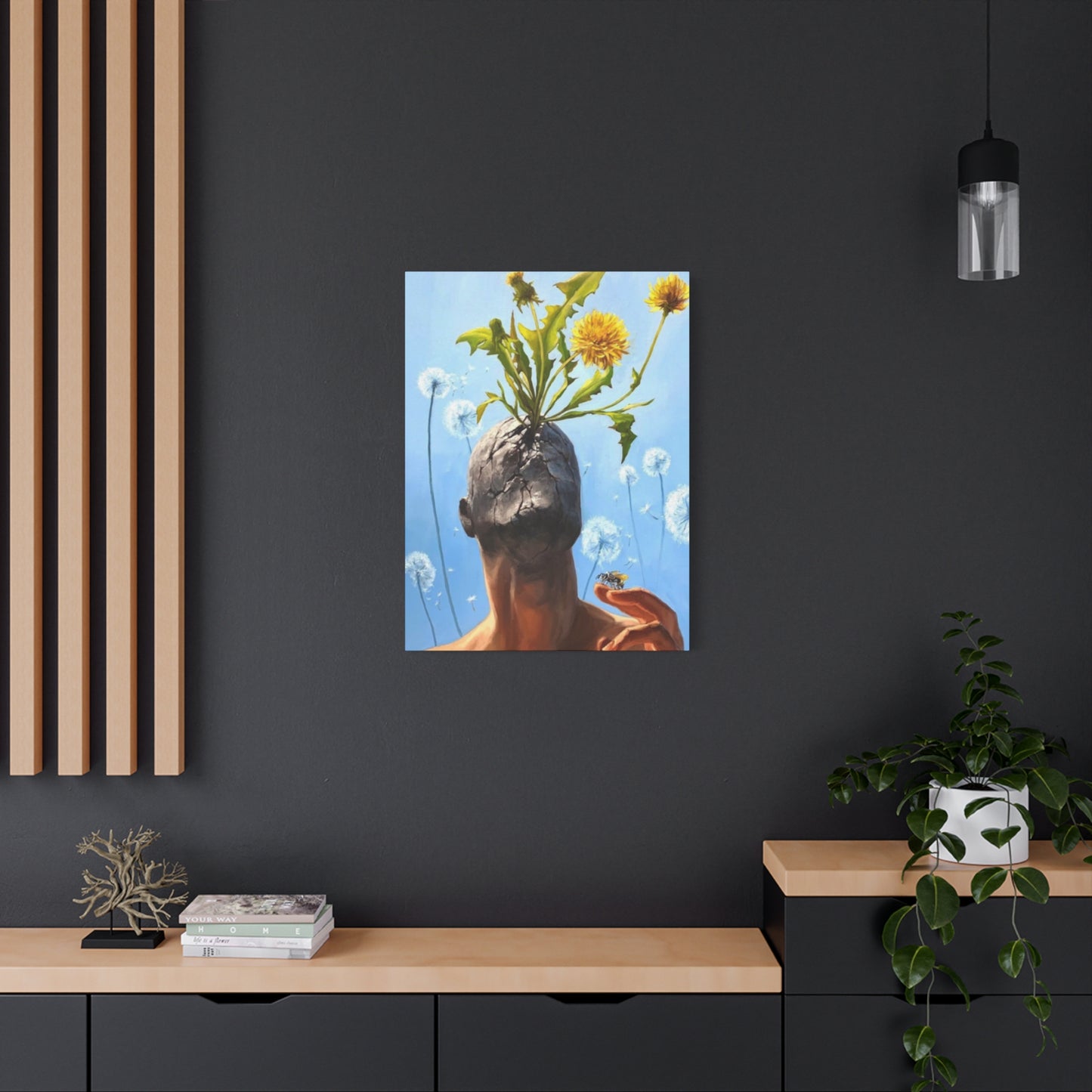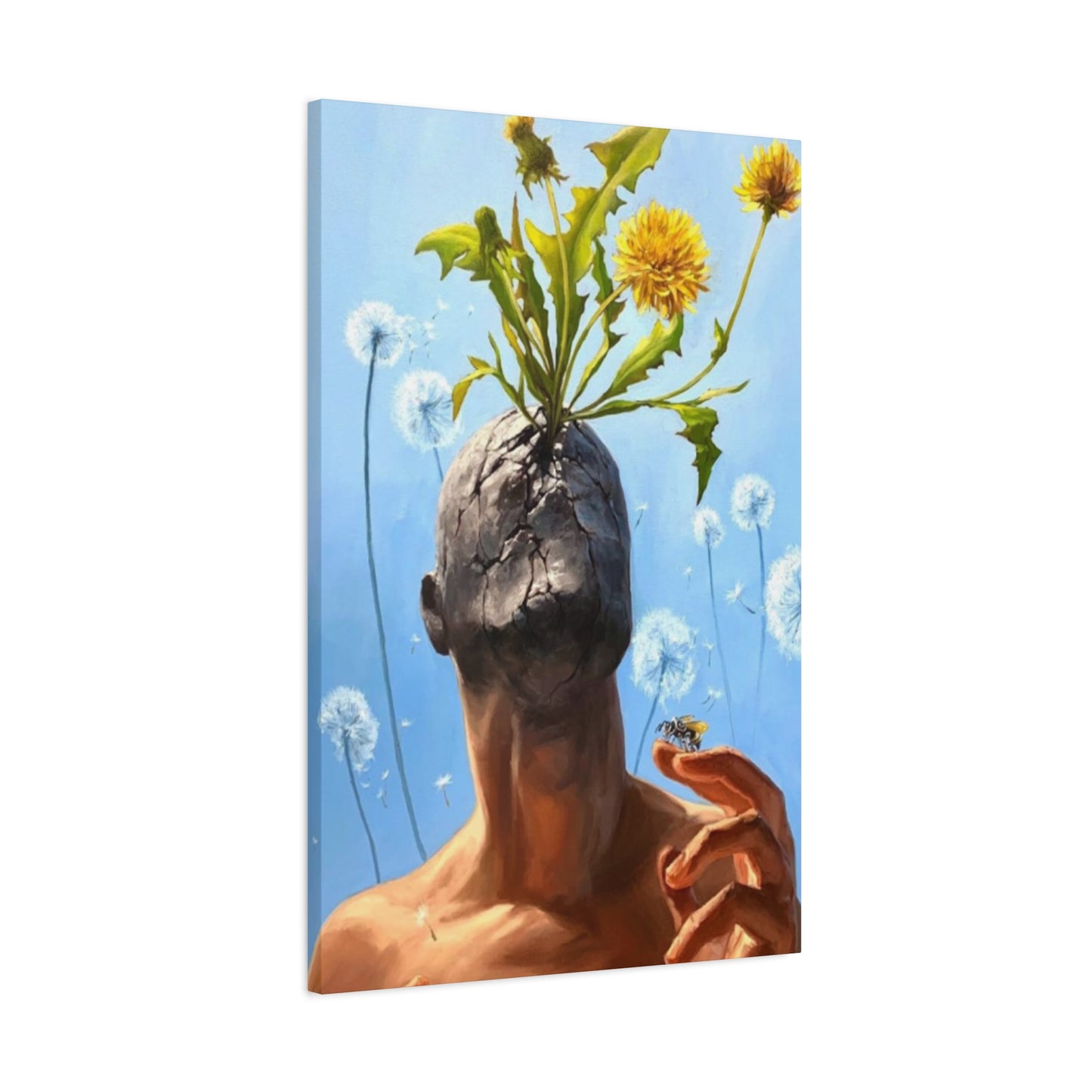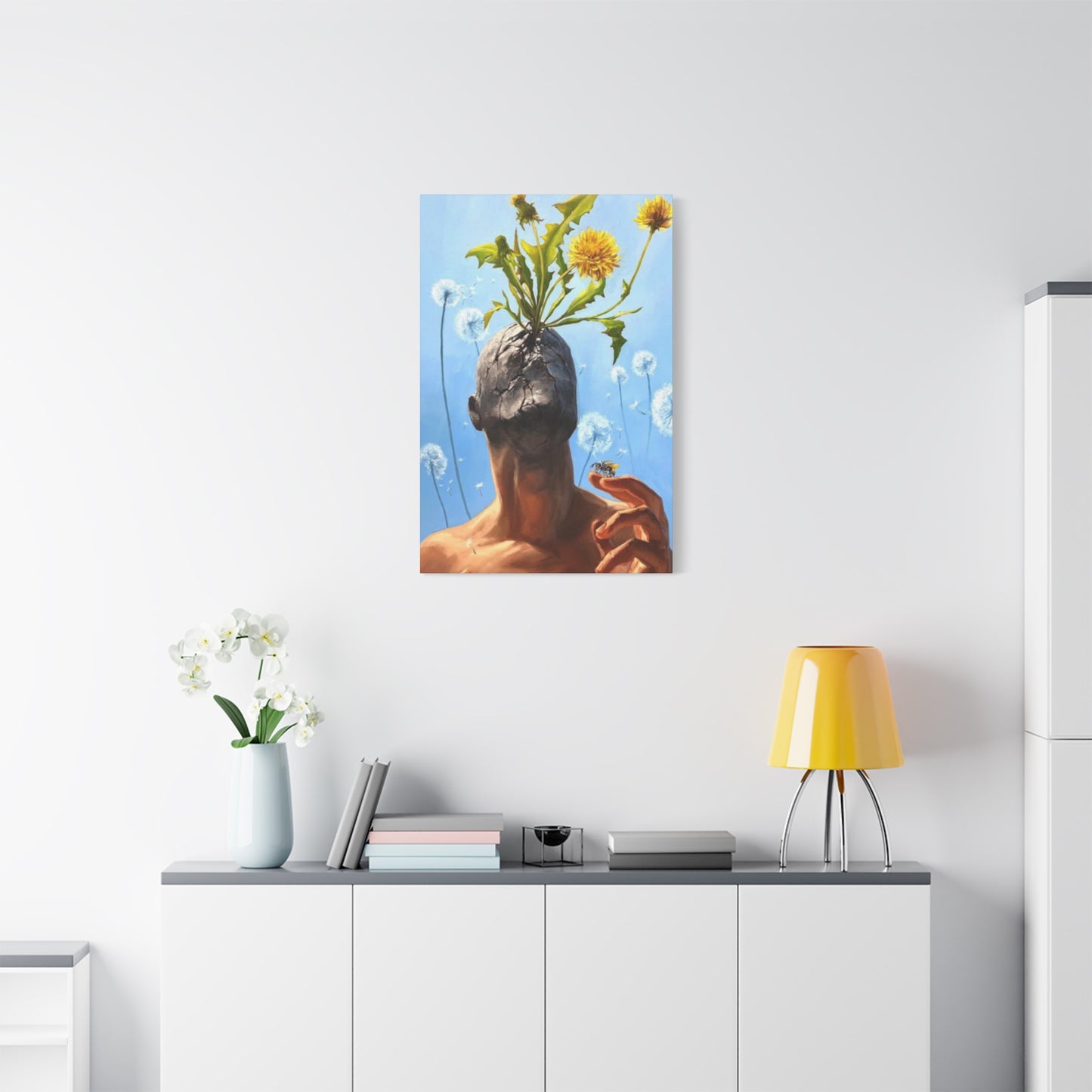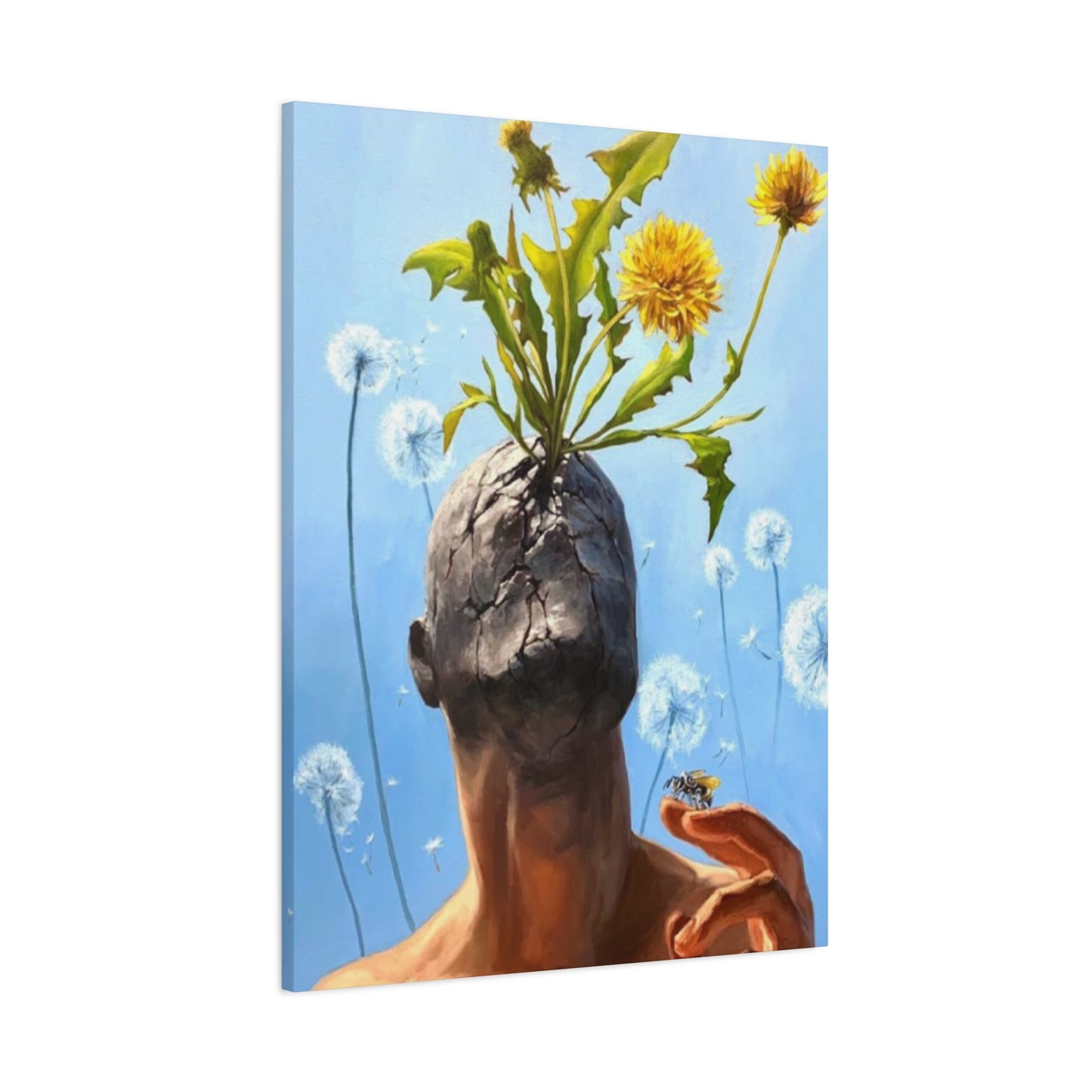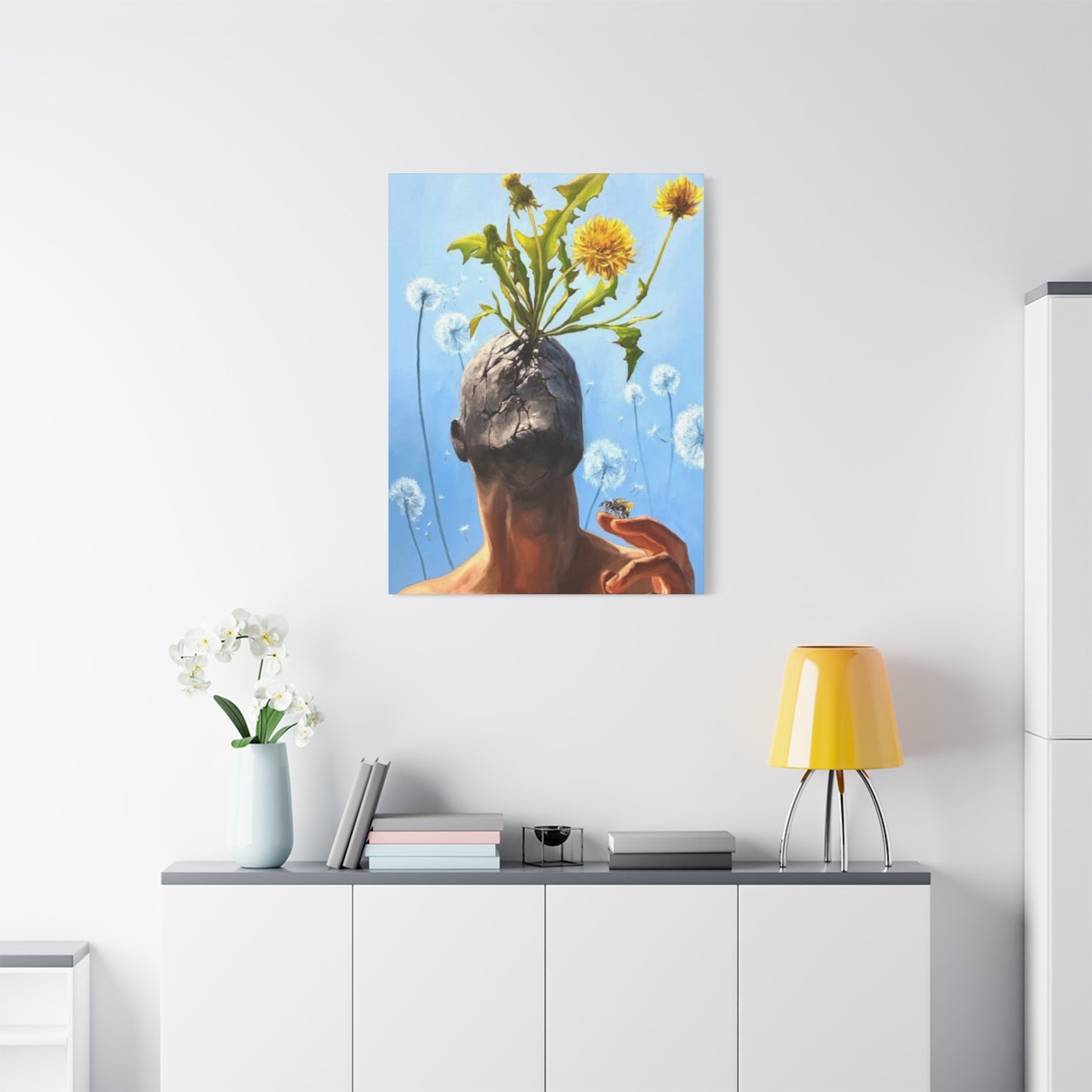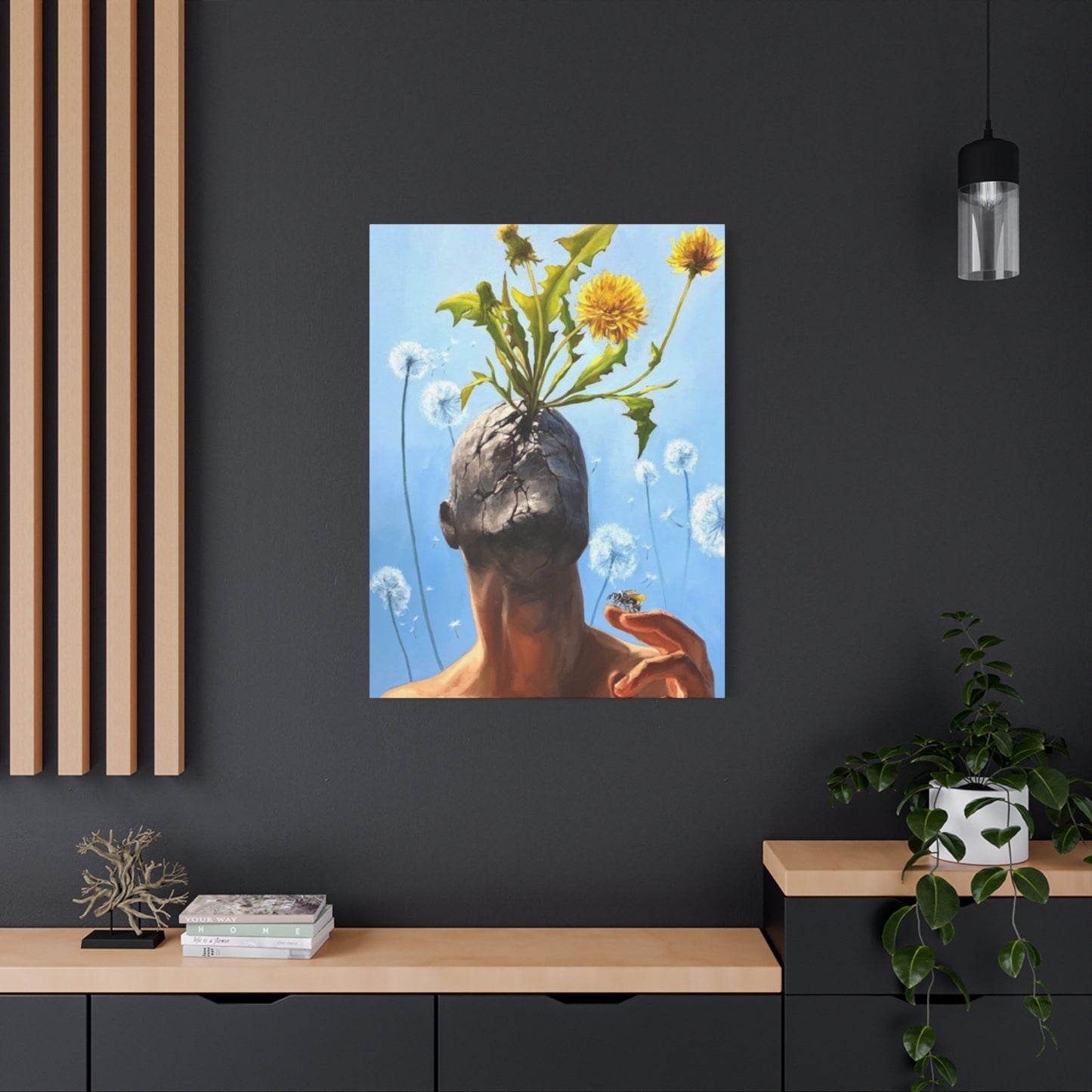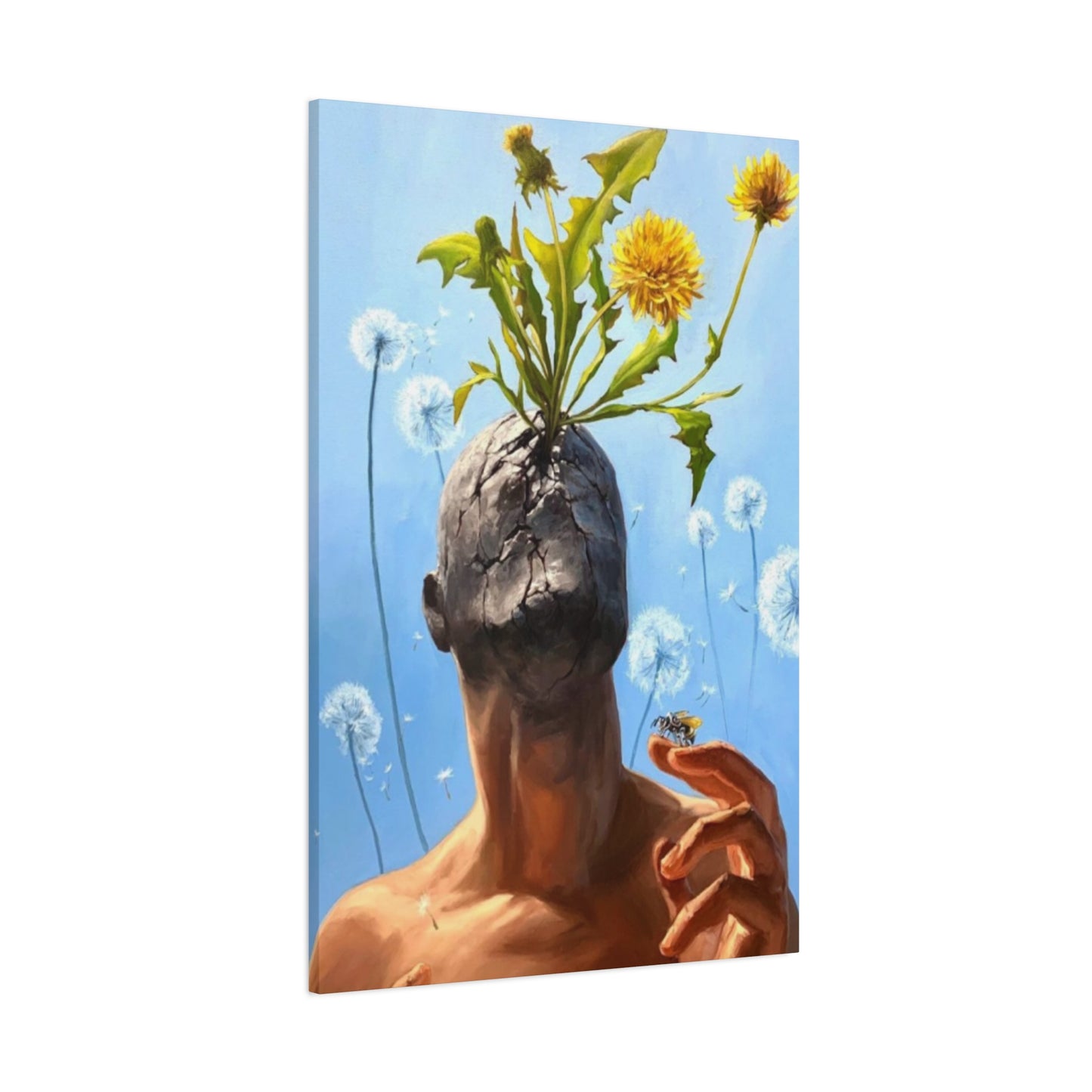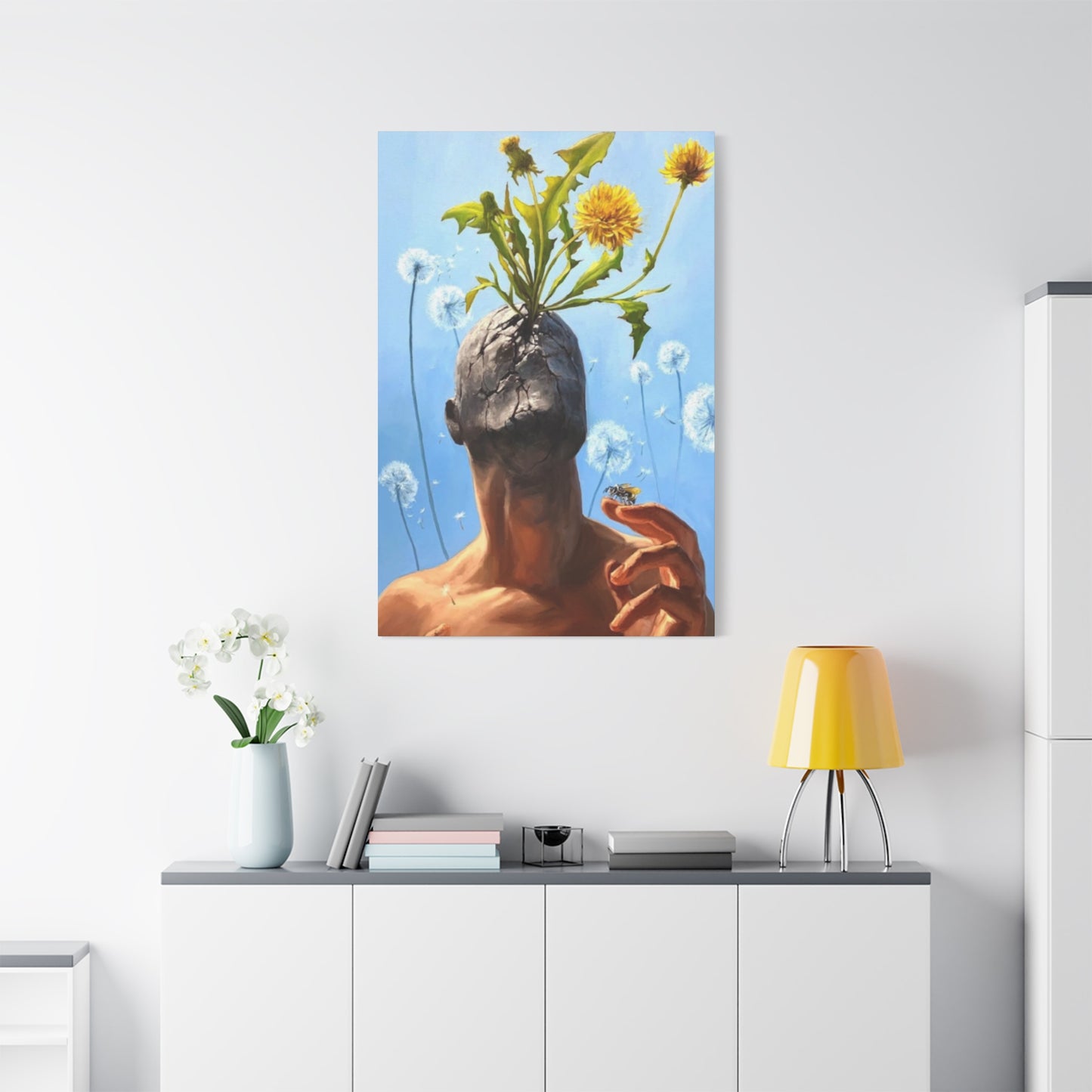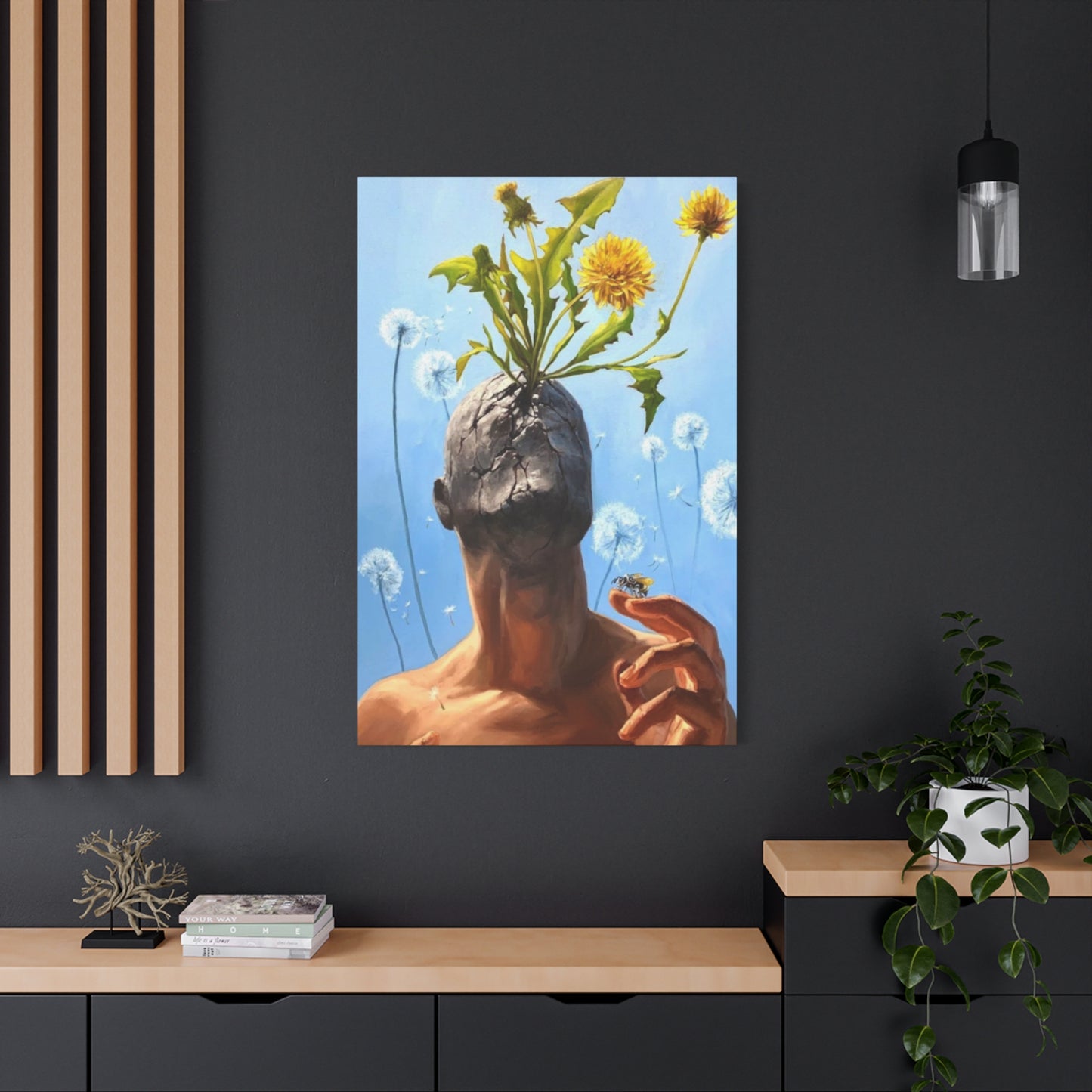Green Minds: Symbolism in 'Plant in a Face' Modernism Wall Art
The artistic landscape has witnessed a remarkable evolution where human portraiture seamlessly merges with botanical elements, creating a distinctive genre that captivates viewers through its profound symbolism and aesthetic appeal. This innovative approach to visual expression represents more than mere decorative art; it embodies a philosophical statement about the interconnectedness between humanity and the natural world.
Contemporary artists have embraced this unique fusion, developing techniques that breathe life into traditional portraiture by incorporating organic elements that speak to our deepest connections with nature. The movement has gained tremendous momentum among collectors, designers, and art enthusiasts who seek meaningful pieces that resonate with both visual beauty and conceptual depth.
The significance of botanical portrait wall art extends beyond aesthetic considerations, touching upon themes of growth, transformation, identity, and environmental consciousness. These works often serve as powerful metaphors for human development, resilience, and our fundamental relationship with the natural environment that sustains us.
The Genesis of Human and Flora Artistic Integration
The conceptual foundation of combining human features with botanical elements traces its origins to ancient civilizations where nature worship and human representation intersected in various forms of artistic expression. However, the contemporary interpretation of this theme has evolved dramatically, incorporating modernist principles and contemporary artistic techniques.
Ancient cultures often depicted deities and mythological figures adorned with natural elements, suggesting divine connections between humans and nature. Egyptian art frequently portrayed gods with plant-like attributes, while Greek and Roman cultures celebrated the transformation of humans into trees and flowers through their mythological narratives. These historical precedents laid the groundwork for modern artists to explore similar themes with fresh perspectives.
The industrial revolution marked a significant shift in human-nature relationships, as urbanization increasingly separated people from natural environments. This separation created a longing that artists began expressing through works that sought to reconnect humanity with its natural roots. The emergence of botanical portrait art can be seen as a response to this cultural and environmental displacement.
Contemporary artists have reinterpreted these ancient themes through the lens of modern artistic movements, incorporating elements of surrealism, abstract expressionism, and conceptual art. The result is a sophisticated genre that speaks to contemporary concerns about environmental degradation, personal identity, and the search for meaning in an increasingly artificial world.
The psychological appeal of these works stems from their ability to trigger deep-seated emotional responses related to our evolutionary connection with nature. Research in environmental psychology suggests that humans possess an innate affinity for natural forms and patterns, which explains why botanical portrait art resonates so strongly with viewers across diverse cultural backgrounds.
Symbolic Language Within Botanical Human Portraiture
The symbolic vocabulary employed in botanical portrait wall art operates on multiple levels, creating rich interpretive possibilities that engage viewers intellectually and emotionally. Each botanical element carries specific meanings that have been developed through centuries of cultural association and artistic tradition.
Flowers within portrait compositions often represent various life stages, emotional states, or personal characteristics. Roses might symbolize passion or love, while wilted petals could suggest mortality or the passage of time. Leaves growing from facial features frequently represent growth, renewal, or the cyclical nature of existence, creating powerful metaphors for personal transformation and development.
The positioning of botanical elements within the human form carries additional symbolic weight. Plants emerging from eyes might suggest vision, perception, or the ability to see beauty in the world. Foliage sprouting from the mouth could represent speech, creativity, or the power of words to create change. Roots extending from the head might symbolize deep thinking, connection to ancestral wisdom, or grounding in fundamental truths.
Color symbolism plays a crucial role in these compositions, with different hues conveying distinct emotional and psychological meanings. Green tones typically represent growth, harmony, and connection to nature, while earth tones might suggest stability, grounding, and authenticity. Bright floral colors can inject energy and optimism into compositions, while muted tones might create more contemplative or melancholic moods.
The interplay between realistic human features and stylized botanical elements creates tension that enhances the symbolic impact of these works. This juxtaposition forces viewers to consider the boundaries between human and natural realms, questioning where one ends and the other begins. Such ambiguity invites personal interpretation and emotional engagement with the artwork.
Contemporary artists often layer multiple symbolic meanings within single compositions, creating works that reveal new interpretations upon repeated viewing. This complexity ensures that botanical portrait wall art maintains its appeal over time, offering fresh insights as viewers mature and their life experiences evolve.
Contemporary Movement of Flora-Integrated Human Art
The contemporary botanical portrait movement represents a sophisticated evolution of traditional artistic themes, incorporating cutting-edge techniques and contemporary aesthetic sensibilities. This movement has emerged as artists seek to address current environmental and social concerns through visually compelling and emotionally resonant works.
Digital technology has revolutionized the creation and distribution of botanical portrait art, allowing artists to experiment with new techniques and reach global audiences. Digital manipulation tools enable precise blending of photographic elements with hand-drawn botanical illustrations, creating seamless compositions that would be impossible through traditional media alone.
Social media platforms have played a significant role in popularizing this art form, providing artists with immediate access to worldwide audiences and enabling rapid sharing of new works. Instagram and Pinterest have become virtual galleries where botanical portrait artists showcase their latest creations and build communities of supporters and fellow artists.
The environmental movement has provided thematic inspiration for many contemporary botanical portrait artists, who use their work to comment on climate change, biodiversity loss, and human impact on natural ecosystems. These artists often incorporate endangered plant species into their compositions, creating works that serve both aesthetic and educational purposes.
Gallery representation for botanical portrait artists has increased significantly in recent years, with major art institutions recognizing the commercial and cultural value of this genre. Collectors have shown strong interest in acquiring pieces that combine visual appeal with meaningful content, driving market demand and encouraging more artists to explore these themes.
The therapeutic applications of botanical portrait art have gained recognition within art therapy communities, where practitioners use creation of such works to help clients explore identity issues, process emotional trauma, and develop healthier relationships with the natural world. This practical application has added another dimension to the movement's significance.
Design Integration Strategies for Botanical Portrait Wall Art
Successfully incorporating botanical portrait wall art into living and working environments requires careful consideration of color schemes, lighting conditions, and surrounding design elements. The unique characteristics of these works demand thoughtful placement to maximize their visual impact and thematic resonance.
Color coordination represents a crucial factor in successful integration, as botanical portrait pieces often contain complex color palettes that must harmonize with existing furnishings and architectural elements. Neutral backgrounds typically allow these works to serve as focal points, while complementary color schemes can create dynamic visual relationships that enhance the overall aesthetic impact.
Lighting considerations play an essential role in presenting botanical portrait wall art effectively. Natural lighting tends to enhance the organic elements within these compositions, creating subtle variations in color and texture throughout the day. Artificial lighting should be carefully selected to avoid color distortion while providing adequate illumination for detailed appreciation of artistic elements.
Scale relationships between artwork and surrounding elements significantly impact visual effectiveness. Large-scale botanical portrait pieces can serve as dominant focal points in spacious rooms, while smaller works might be grouped together to create compelling gallery walls. The intimate nature of portrait compositions often benefits from viewing distances that allow appreciation of fine details and subtle color variations.
Framing choices influence both the aesthetic presentation and preservation of botanical portrait wall art. Contemporary works often benefit from clean, minimal frames that do not compete with the complex imagery within the composition. Conservation-grade materials ensure long-term preservation while maintaining visual clarity and color accuracy.
Thematic coordination with other design elements can enhance the impact of botanical portrait art while creating cohesive environmental narratives. Natural materials, organic textures, and complementary botanical elements can reinforce the connection between human and natural realms that these works celebrate.
Abstract Expression Through Botanical Human Forms
Abstract interpretation of botanical portrait themes allows artists to explore conceptual relationships between human and natural forms without being constrained by realistic representation. This approach opens new avenues for creative expression while maintaining the essential symbolic connections that make this genre so compelling.
Geometric abstraction of human features combined with organic botanical forms creates intriguing visual tensions that challenge traditional perceptions of both portraiture and nature art. Angular facial structures intersecting with flowing plant forms can suggest the conflict between artificial and natural environments, or the integration of opposing forces within individual identity.
Color field techniques applied to botanical portrait compositions enable artists to explore emotional and psychological themes through pure color relationships. Large areas of botanical greens might be punctuated by small areas of human flesh tones, creating compositions that prioritize feeling over literal representation while maintaining thematic coherence.
Textural abstraction allows artists to suggest both human skin and plant surfaces through innovative mark-making techniques. Brushwork that simultaneously evokes hair and grass, or skin and bark, creates ambiguous surfaces that invite tactile imagination and emotional response from viewers.
Collage techniques incorporating both photographic and painted elements enable artists to create complex layered compositions that suggest multiple temporal and spatial relationships. Historical botanical illustrations might be combined with contemporary portrait photography, creating works that span centuries of artistic tradition while addressing current themes.
The emotional impact of abstract botanical portraiture often exceeds that of realistic representations, as viewers are invited to project their own experiences and interpretations onto ambiguous forms. This participatory aspect of viewing enhances the personal connection between artwork and audience, creating more meaningful and lasting relationships.
Compositional Techniques in Plant-Human Artistic Fusion
The successful fusion of botanical and human elements requires sophisticated compositional strategies that balance competing visual elements while maintaining thematic coherence. Artists working in this genre have developed various approaches to creating harmonious relationships between organic and figurative components.
Asymmetrical balance often proves more effective than symmetrical arrangements in botanical portrait compositions, as it reflects the irregular growth patterns found in nature while maintaining visual stability. Placing the human face off-center and allowing botanical elements to flow naturally around it can create more dynamic and visually interesting compositions.
Scale relationships between human and botanical elements significantly impact the overall meaning and visual effect of compositions. Oversized flowers or leaves in relation to facial features might suggest the dominance of nature over humanity, while diminutive plant elements could indicate human control or the fragility of natural systems.
Depth creation through overlapping elements adds visual complexity and suggests three-dimensional relationships between human and botanical forms. Transparent leaves overlaying facial features, or flowers appearing to grow through portrait elements, create layered compositions that reward careful observation and extended viewing.
Directional flow guides viewer attention through compositions while suggesting narrative relationships between elements. Vine-like growth patterns can lead the eye from one area of the composition to another, while the orientation of leaves and flowers can create rhythmic movements that enhance visual engagement.
Color gradation techniques allow artists to create seamless transitions between human skin tones and botanical colors, suggesting transformation or metamorphosis themes. Subtle shifts from flesh tones to green leaf colors can indicate growth or change, while abrupt color changes might suggest conflict or dramatic transformation.
Resonance of Nature-Human Art Integration
The psychological impact of botanical portrait wall art stems from fundamental human responses to both natural forms and human faces, creating powerful emotional connections that operate below the level of conscious awareness. Understanding these psychological mechanisms helps explain the widespread appeal of this artistic genre.
Facial recognition systems in the human brain respond immediately to portrait elements within botanical compositions, triggering emotional and social responses that form the foundation for viewer engagement. These automatic responses create immediate connections between viewer and artwork that facilitate deeper exploration of symbolic and thematic content.
Biophilia, the innate human affinity for natural forms and processes, explains why botanical elements within portrait compositions feel psychologically satisfying and emotionally nourishing. Research has demonstrated that exposure to natural forms, even in artistic representation, can reduce stress levels and improve emotional well-being.
Identity projection mechanisms allow viewers to see aspects of themselves within botanical portrait compositions, particularly when the human elements are somewhat abstracted or universalized. This psychological identification enhances personal connection with the artwork and increases its emotional significance for individual viewers.
The therapeutic potential of botanical portrait art has been recognized by art therapists who use viewing and creating such works to help clients explore identity issues, process emotional experiences, and develop healthier relationships with natural environments. These applications demonstrate the profound psychological impact these works can achieve.
Archetypal imagery within botanical portrait compositions connects with collective unconscious themes that resonate across cultural boundaries. The integration of human and natural forms taps into ancient symbolic traditions that speak to universal human experiences of growth, transformation, and connection with the natural world.
Minimalist Environment Enhancement Through Flora-Face Art
The integration of botanical portrait wall art into minimalist environments presents unique opportunities and challenges that require careful consideration of design principles and aesthetic goals. These compositions can serve as powerful focal points while maintaining the clean, uncluttered aesthetic that defines minimalist design.
Visual weight distribution becomes crucial when introducing botanical portrait pieces into minimalist settings, as these works often contain complex imagery that must be balanced against the simplicity of surrounding elements. Strategic placement ensures that artwork enhances rather than overwhelms the carefully curated minimalist environment.
Color palette coordination takes on heightened importance in minimalist settings, where limited color schemes create opportunities for botanical portrait art to provide controlled color introduction. Monochromatic or limited-palette works can maintain minimalist principles while adding visual interest and thematic depth to otherwise sparse environments.
Scale considerations become more critical in minimalist environments, where every element carries greater visual weight due to the absence of competing objects. Botanical portrait pieces must be sized appropriately to create impact without dominating the carefully balanced proportions that characterize successful minimalist design.
Negative space utilization around botanical portrait artworks can enhance their impact while maintaining minimalist principles. Generous white or neutral space surrounding these compositions allows their complex imagery to breathe while preventing visual overcrowding that would compromise the minimalist aesthetic.
The conceptual alignment between botanical portrait themes and minimalist philosophy creates natural harmony when these elements are combined thoughtfully. Both approaches seek to distill complex ideas into essential forms, making them compatible partners in contemporary design applications.
Notable Artists Pioneering Botanical Portrait Wall Art
Contemporary artists working in the botanical portrait genre have developed distinctive approaches that reflect their individual perspectives while contributing to the overall evolution of this artistic movement. Their innovations have established new standards and opened new possibilities for artistic expression within this field.
Digital artists have emerged as significant contributors to the botanical portrait movement, utilizing technology to create precise blending of photographic and illustrated elements that would be impossible through traditional media. These artists often work with high-resolution imagery that allows for detailed printing at various scales, making their work accessible for both intimate and large-scale installations.
Traditional media artists continue to explore botanical portrait themes through painting, drawing, and mixed-media techniques that emphasize the handmade quality and unique characteristics of original artworks. These artists often incorporate actual botanical specimens into their compositions, creating works that bridge the gap between art and nature.
Collaborative artistic teams have formed around botanical portrait projects, bringing together specialists in botany, psychology, and visual arts to create works that are both scientifically accurate and emotionally resonant. These collaborations often result in educational components that enhance the cultural and social impact of the artwork.
Emerging artists from diverse cultural backgrounds have brought fresh perspectives to botanical portrait art, incorporating traditional plant symbolism from their heritage cultures while addressing contemporary environmental and social issues. This cultural diversity has enriched the symbolic vocabulary and expanded the thematic possibilities within the genre.
Gallery representation for botanical portrait artists has evolved from alternative art venues to mainstream institutions, reflecting the growing recognition of this genre's artistic merit and commercial viability. Major museums have begun acquiring significant works for their permanent collections, establishing botanical portrait art as a legitimate and important contemporary movement.
Color Psychology in Botanical Human Artwork
The strategic use of color in botanical portrait wall art creates psychological responses that enhance the emotional impact and symbolic meaning of these compositions. Understanding color psychology enables both artists and viewers to appreciate the sophisticated ways in which hue, saturation, and value contribute to the overall effectiveness of these works.
Green tones, naturally associated with plant life, carry psychological associations of growth, harmony, renewal, and connection to nature. Different shades of green can evoke various responses, from the fresh vitality of new leaves to the deep stability of mature foliage. Artists manipulate these associations to create specific emotional atmospheres within their compositions.
Warm colors introduced through floral elements or skin tones create psychological contrast with cooler botanical greens, generating visual tension that enhances viewer engagement. Red flowers might suggest passion or life force, while yellow blooms could indicate joy or enlightenment. These warm accents prevent botanical portrait compositions from becoming psychologically cold or distant.
Earth tones connecting human and plant elements create psychological grounding that reinforces themes of natural connection and authentic identity. Brown and ochre tones suggest stability, authenticity, and connection to the earth, while simultaneously providing neutral bridges between more saturated color areas within compositions.
Monochromatic color schemes can create sophisticated psychological effects in botanical portrait art, using variations in value and saturation to create depth and interest without the complexity of multiple hues. These approaches often feel more contemplative and introspective, encouraging quiet reflection rather than dramatic emotional response.
Color temperature variations within single compositions can suggest temporal changes or emotional states, with cooler areas indicating distance or melancholy while warmer zones suggest intimacy or joy. Artists use these temperature shifts to create psychological movement and narrative development within static compositions.
Cultural Significance Across Different Societies
The symbolic and aesthetic appeal of botanical portrait wall art transcends cultural boundaries while simultaneously reflecting specific cultural values and traditional beliefs about the relationship between humans and nature. Different societies interpret these works through their own cultural lenses, creating rich layers of meaning and significance.
Eastern cultural traditions often emphasize harmony between human and natural elements, making botanical portrait art particularly resonant within these cultural contexts. Concepts of balance, energy flow, and spiritual connection with nature align naturally with the themes explored in botanical portrait compositions, creating immediate cultural recognition and appreciation.
Indigenous cultural perspectives bring unique interpretative frameworks to botanical portrait art, often emphasizing spiritual connections between human identity and plant allies. Many indigenous traditions recognize specific plants as teachers or guides, adding layers of meaning to botanical portrait compositions that incorporate these culturally significant species.
Western contemporary culture has embraced botanical portrait art as a response to environmental concerns and urban alienation from nature. These works often serve as reminders of lost connections with natural environments and symbols of desired reunion with organic processes and rhythms that have been displaced by technological civilization.
African artistic traditions contribute rich symbolic vocabularies related to plant-human relationships, often emphasizing community connections, ancestral wisdom, and spiritual transformation. Artists drawing from these traditions bring powerful ceremonial and ritualistic associations to botanical portrait compositions.
Contemporary global culture has created new interpretative frameworks for botanical portrait art that emphasize environmental activism, sustainability, and universal human experiences that transcend specific cultural boundaries. These universal themes allow botanical portrait art to communicate effectively across diverse cultural contexts while maintaining local relevance and meaning.
Therapeutic Applications of Flora-Face Art
The therapeutic potential of botanical portrait wall art extends beyond passive viewing to include active creation and interactive engagement with these powerful symbolic compositions. Mental health professionals and art therapists have recognized the unique healing properties these works can provide for various psychological and emotional conditions.
Identity exploration benefits significantly from botanical portrait creation, as individuals can express complex relationships between their personal identity and natural connections through artistic composition. The process of selecting botanical elements and integrating them with self-portraiture often reveals unconscious aspects of personality and desired growth directions.
Trauma processing can be facilitated through botanical portrait art creation, allowing individuals to express difficult emotions and experiences through metaphorical plant imagery rather than direct narrative representation. The symbolic distance provided by botanical metaphors can make traumatic material more accessible and manageable during therapeutic processing.
Environmental grief, the emotional response to environmental destruction and climate change, can be addressed through botanical portrait art that honors lost or threatened plant species while expressing hope for renewal and healing. These works can serve as memorials for extinct species while simultaneously celebrating the resilience of life.
Addiction recovery programs have incorporated botanical portrait art creation to help individuals reconnect with natural rhythms and healthy growth patterns after periods of destructive behavior. The metaphor of plant growth and renewal provides powerful imagery for personal transformation and recovery processes.
Anxiety and depression can be addressed through both creation and contemplation of botanical portrait art, as these activities often produce meditative states that reduce stress and promote emotional regulation. The natural imagery and growth metaphors provide psychological resources for managing difficult emotional states.
Methods for Creating Plant-Human Art
Contemporary artists employ diverse technical approaches to create botanical portrait wall art, ranging from traditional media applications to cutting-edge digital techniques. Understanding these methods provides insight into the creative processes behind these compelling works while inspiring new artistic possibilities.
Digital manipulation techniques allow precise blending of photographic portrait elements with botanical imagery sourced from various references. Software tools enable seamless integration of different source materials while maintaining realistic lighting, shadow, and color relationships that create convincing composite images.
Traditional painting approaches often involve building up layers of botanical and human elements through careful observation and artistic interpretation. Oil and acrylic paints allow for subtle color blending and textural effects that can suggest both human skin and plant surfaces within single compositions.
Mixed media techniques incorporate actual botanical specimens, photographic elements, and painted surfaces within single artworks. These approaches can create textural richness and dimensional complexity that purely painted or digital works cannot achieve, while adding conceptual layers related to the incorporation of actual natural materials.
Printmaking methods, including lithography, screenprinting, and digital printing, enable artists to create multiple versions of botanical portrait compositions while experimenting with different color combinations and surface treatments. These techniques often produce unique textural qualities that enhance the organic feel of botanical elements.
Photomontage techniques combine multiple photographic sources to create surreal botanical portrait compositions that maintain photographic realism while presenting impossible combinations of human and plant elements. These works often have dream-like qualities that enhance their symbolic and emotional impact.
Collage approaches incorporate various paper materials, including pressed flowers, botanical illustrations, and photographic fragments, to create layered compositions that suggest temporal and spatial relationships between human and natural elements. These techniques often produce works with rich surface textures and complex visual relationships.
Market Trends and Collector Interest
The commercial art market has shown increasing interest in botanical portrait wall art, driven by growing environmental consciousness, desire for meaningful art, and appreciation for works that combine aesthetic appeal with conceptual depth. Understanding market trends provides insight into the cultural significance and future development of this artistic genre.
Collector demographics for botanical portrait art span diverse age groups and cultural backgrounds, with particular appeal among environmentally conscious individuals, mental health professionals, and design enthusiasts seeking meaningful artwork for residential and commercial environments. This broad appeal has contributed to steady market growth and increased artist opportunities.
Price ranges for botanical portrait art vary significantly based on artist reputation, work size, media, and edition status. Original paintings and unique mixed-media works command higher prices than digital prints, while established artists with gallery representation achieve premium pricing compared to emerging artists selling through online platforms.
Corporate collecting has embraced botanical portrait art for commercial environments, particularly in healthcare, wellness, and environmentally focused businesses where these works reinforce organizational values and create psychologically beneficial environments for employees and clients.
Online marketplace platforms have democratized access to botanical portrait art, allowing emerging artists to reach global audiences while providing collectors with diverse options at various price points. These platforms have been particularly important for digital artists and those creating limited edition prints.
Investment potential for botanical portrait art appears strong given the growing environmental movement, increasing recognition of art therapy benefits, and expanding appreciation for works that address contemporary cultural concerns. Collectors view these works as both aesthetically pleasing and culturally significant investments.
Gallery representation for botanical portrait artists has expanded from alternative venues to established galleries and art fairs, indicating mainstream acceptance and commercial viability. This institutional recognition has provided greater visibility and credibility for artists working in this genre.
Environmental Messages Through Art
Botanical portrait wall art frequently serves as a vehicle for environmental advocacy, using the powerful combination of human identification and natural imagery to communicate urgent messages about ecological preservation, climate change, and humanity's relationship with the natural world.
Climate change awareness can be effectively communicated through botanical portrait compositions that incorporate threatened or extinct plant species, suggesting the loss of natural diversity through human environmental impact. These works often carry emotional weight that pure documentary photography cannot achieve, making environmental issues personally relevant to viewers.
Conservation messaging often appears in botanical portrait art through the celebration of endangered species and threatened ecosystems. Artists may incorporate specific plants that require protection, educating viewers about biodiversity loss while creating beautiful works that honor the aesthetic value of threatened species.
Sustainable lifestyle promotion emerges naturally from botanical portrait art that emphasizes positive human-nature relationships and the benefits of environmental connection. These works can inspire viewers to seek greater integration with natural processes in their daily lives and consumption choices.
Urban environmental issues, including air pollution, loss of green environments, and disconnection from natural processes, are frequently addressed through botanical portrait compositions that suggest alternative relationships between human civilization and natural systems.
Regenerative agriculture and permaculture principles find artistic expression in botanical portrait art that emphasizes growth, renewal, and positive transformation. These works often celebrate the potential for healing damaged environments and creating sustainable food systems.
Environmental justice themes appear in botanical portrait art that addresses unequal access to natural environments and the disproportionate environmental impacts experienced by marginalized communities. These works can raise awareness about social and environmental issues while advocating for equitable solutions.
Evolution of Botanical Portrait Art
The continued development of botanical portrait wall art promises exciting innovations driven by technological advances, evolving environmental concerns, and expanding understanding of the psychological benefits these works provide. Anticipating future trends helps identify emerging opportunities for artists and collectors.
Virtual and augmented reality technologies may enable new forms of botanical portrait art that allow viewers to experience immersive environments where they can interact with plant-human hybrid forms in three-dimensional environments. These technologies could transform passive viewing into active participation.
Bioart techniques incorporating living plant materials into portrait compositions may create works that continue evolving after installation, blurring boundaries between art and nature while raising questions about the definition and permanence of artistic objects.
Artificial intelligence tools may enable new approaches to botanical portrait creation, allowing artists to explore vast databases of plant imagery and generate novel combinations that would be impossible to conceive through traditional creative processes. These tools could accelerate artistic experimentation while raising questions about authorship and creativity.
Environmental monitoring integration could create botanical portrait artworks that respond to local environmental conditions, changing color, form, or content based on air quality, temperature, or seasonal variations. These responsive works would create direct connections between art and environmental awareness.
Therapeutic applications may expand as research continues to document the psychological benefits of botanical portrait art, leading to specialized artworks designed for specific therapeutic purposes and clinical environments.
Global collaboration between artists from different cultural backgrounds may produce botanical portrait works that synthesize diverse plant symbolism and cultural perspectives, creating truly international artistic expressions that address universal human experiences while honoring cultural diversity.
Conclusion
Botanical portrait wall art represents a profound artistic movement that addresses contemporary cultural needs while drawing upon ancient symbolic traditions connecting humanity with the natural world. These compelling works function on multiple levels, serving simultaneously as aesthetic objects, psychological tools, environmental statements, and cultural expressions that resonate across diverse audiences and contexts.
The fusion of human portraiture with botanical elements creates powerful metaphors for growth, transformation, identity, and environmental connection that speak to fundamental human experiences and concerns. As environmental challenges intensify and urban populations become increasingly disconnected from natural processes, these artworks provide essential reminders of our dependence upon and connection with natural systems.
The psychological benefits documented through therapeutic applications demonstrate that botanical portrait art offers more than visual pleasure, providing genuine healing and personal development opportunities for individuals struggling with identity issues, environmental grief, trauma recovery, and mental health challenges. These practical applications establish the genre as culturally significant beyond its aesthetic merit.
Contemporary artists continue pushing the boundaries of botanical portrait art through innovative techniques, diverse cultural perspectives, and technological integration that expands expressive possibilities while maintaining the essential symbolic connections that define this artistic movement. The result is a dynamic field that continues evolving while remaining grounded in timeless human experiences.
Market acceptance and collector interest confirm the commercial viability of botanical portrait art while supporting artists who choose to work within this meaningful genre. This economic foundation enables continued experimentation and development while ensuring that these important works reach diverse audiences through galleries, online platforms, and institutional collections.
The environmental advocacy potential of botanical portrait art provides artists with powerful tools for communicating urgent messages about conservation, climate change, and sustainable living while creating works that inspire rather than overwhelm viewers with environmental concerns. This positive approach to environmental communication represents a valuable contribution to broader cultural conversations about humanity's relationship with nature.
Educational applications continue expanding as institutions recognize the value of botanical portrait art for teaching environmental science, psychology, cultural studies, and artistic techniques. These works serve as excellent focal points for interdisciplinary discussions that connect artistic expression with scientific understanding and cultural awareness.
The therapeutic applications of botanical portrait art promise continued growth as mental health professionals increasingly recognize the benefits of nature-based interventions and artistic expression for treating various psychological conditions. The combination of creative expression and natural imagery provides powerful tools for healing and personal development.
Cultural significance across diverse societies ensures that botanical portrait art will continue finding new interpretations and applications as artists from different backgrounds bring their unique perspectives to bear on universal themes of human-nature connection. This cultural diversity enriches the symbolic vocabulary and expands the expressive possibilities within the genre.
Looking toward the future, botanical portrait art appears positioned for continued growth and evolution driven by technological innovation, environmental urgency, and expanding understanding of the psychological benefits these works provide. Virtual reality, bioart techniques, artificial intelligence, and environmental monitoring may transform how these works are created and experienced while maintaining their essential focus on human-nature relationships.
The enduring appeal of botanical portrait wall art stems from its ability to address contemporary concerns through timeless symbolic language that speaks to fundamental human experiences of growth, identity, and connection with the natural world. As environmental challenges intensify and technology increasingly mediates human experience, these works provide essential reminders of our biological heritage and ecological dependence.
For collectors, designers, and art enthusiasts, botanical portrait art offers meaningful alternatives to purely decorative works, providing pieces that enhance environments while conveying significant messages about human potential, environmental stewardship, and the healing power of natural connection. These works prove that aesthetic beauty and conceptual depth can coexist within contemporary art practice.
The success of botanical portrait art demonstrates public hunger for meaningful artistic expression that addresses current challenges while providing hope for positive transformation. As this genre continues evolving, it will likely play an increasingly important role in cultural conversations about environmental preservation, mental health awareness, and the search for authentic human identity in an increasingly artificial world.
Ultimately, botanical portrait wall art succeeds because it speaks to fundamental aspects of human nature that transcend cultural boundaries and temporal limitations. By celebrating the connection between human identity and natural processes, these works affirm life, growth, and transformation while providing visual beauty and psychological nourishment that enriches both individual experience and cultural discourse.

















